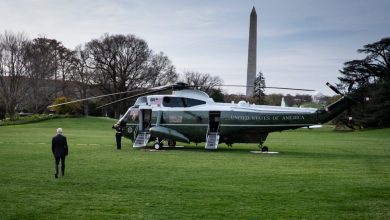An Amelia Earhart Mystery Solved (Not That Mystery)

The response from the experts was always the same: So, your mom told you this aviator’s helmet belonged to Amelia Earhart? That’s great, they’d say, but we’re going to need a little more proof.
That was the gist of the messages conveyed to Anthony Twiggs, who inherited the leather cap more than 20 years ago when his mother died.
It was still, after all these years, remarkably supple, with the tiniest of tears just below the half-moon-shaped communications pocket on the left flap. The cap looked very much like the aviator’s helmet she wore for her first trans-Atlantic flight, in 1928. It had been missing since an air race in 1929. This was the same race from which Earhart’s leather goggles went missing, later found with lenses missing and donated in 1957 to the Smithsonian.
The story of Earhart’s iconic helmet began as part of a 1928 marketing stunt in an office in Times Square, where the idea of the “Lady Lindy” was created. How Mr. Twiggs, now 67, came to be possess this famous cap starts with a tale his mother used to tell about the day in 1929 that she saw Amelia Earhart at Cleveland Municipal Airport. It was the finish line of the Women’s National Air Derby — forever branded as the Powder Puff Derby, thanks to a wisecrack from Will Rogers, the folksy movie star and humorist.
The race started in Santa Monica, Calif.: 20 women, 20 airplanes, taking off one after the other at one-minute intervals. Earhart, already world famous and the odds-on favorite to win, arrived in Cleveland after eight grueling days. Only 11 women made it all the way to the end, where 18,000 spectators were waiting, including Mr. Twiggs’s mother, Ellie Brookhart.
Even though Earhart would take only third place, she was mobbed by fans at the airfield, and Ellie and a group of school friends were among those who raced to greet her single-engine Lockheed Vega after its loud and bumpy landing. To hear his mother describe it, it was chaos on the airstrip. (Mr. Twiggs has found old newsreel footage on YouTube to confirm her report.)
In her story, a boy who had a crush on her pulled her aside afterward. He told her he had Amelia’s leather helmet and wanted her to have it. She asked him if he had ripped it off her head. He told her he had found it on the ground.
On the rare occasion that his mother recounted the story, she might, if begged, take out the helmet for one of her four children. She had stored it carefully in an unsealed see-through plastic bag, “like a Ziploc without the zip,” which was carefully laid out on tissue paper in a small box.
And there it stayed for the better part of a century until Mr. Twiggs decided it might be better in a museum instead of a closet in Minnesota. No one in his extended family was as fascinated by it as he was.
The Great Read
More fascinating tales you can’t help but read all the way to the end.
- Who inherits the rights to a loner’s genius? Relatives of the reclusive artist Henry Darger are challenging his landlords’ claim in court.
- The Rev. Canon Paul Wancura led a quiet, privileged life on Shelter Island. But after his shocking death, a sexual abuse allegation followed.
- Born in the U.S., Eileen Gu will compete in the Beijing Olympics for China. Can the 18-year-old freeskier soar over the geopolitical divide?
The first time he pitched an expert, one he saw on “Antiques Roadshow,” he was almost laughed off the phone. But no matter who Mr. Twiggs contacted about his charming story, he was dismissed. “Maybe they all thought I was some hick in Minnesota.”
Eventually, he started to doubt himself. Could his mother have made this all up? She had, after all, shaved a few years off her birth. She never did like being older than her husband.
Amelia Earhart did the same. A year before the Derby race, Earhart was a young social worker with a pilot’s license who lied about her age in a life-changing interview in Midtown Manhattan. She was meeting with George Palmer Putnam in the famous Putnam Building, with its giant PUTNAM banner fluttering from the roof in Times Square.
She’d been scouted in Boston, and now she was interviewing with Putnam, the publishing scion, who wanted her to join the first flight with a female passenger across the Atlantic. She figured it would sound better if she were 29 and not 31.
It was all hush-hush, this handsome and influential man warned her. The endeavor was to be paid for by the steel heiress Amy Phipps Guest. Earhart would only be a passenger on the flight, and she wouldn’t even get paid. But her presence was crucial.
The year before, 1927, Charles Lindbergh enthralled the world when he flew from Garden City, N.Y., to Paris nonstop. Putnam, through clever maneuvering, became his publisher, shepherding Lindbergh’s quickly written memoir, “WE” — the plural being a reference to him and his plane — from start to finish, and it sold a sensational 650,000 copies in its first year.
A female Lindbergh, Putnam knew, would make another good book. And after Lindy, Earhart knew, glory would go to the first woman to cross, even as a passenger.
In the year since Lindbergh’s flight, half a dozen women had tried and failed, with four of them dying. But Putnam was not one to heed danger, and to his delight, Earhart said yes. She’d fly along.
Days before the first leg of the trans-Atlantic flight, from Boston to Newfoundland, Earhart arrived for a secret photo shoot on the roof of Copley Plaza Hotel in the brown leather jacket, lace-up boots and leather helmet that she had worn on flights for years. The photographer angled her profile to look much like the photos of Lindbergh. The stylish shots of Earhart in her flight gear would run in The New York Times, which was paying Putnam for exclusive access to the aviators, if the flight succeeded.
It did, on June 18, 1928. She returned triumphantly to America — by ship — and received a ticker-tape parade in downtown New York, just as Lindy had. Sure, the hoopla was also for Wilmer Stultz and Louis Gordon, the two men who did the actual piloting, but who cared about them? Everyone wanted a glimpse of Lady Lindy, who cut a dashing figure as she waved at the crowds from the back of a convertible.
Nine years later, Earhart would vanish somewhere near tiny Howland Island, barely a speck in the Pacific Ocean.
This October, Anthony Twiggs thought he’d try to unload his famous artifact one last time. He had read about the growing field of photo matching, which compares photos of objects on auction digitally with old photos or film. Extraordinary auction figures have been achieved with this new form of authentication: Thanks to photo matching, a Lou Gehrig jersey was sold at auction for $2.58 million in 2019.
Mr. Twiggs, himself a retired photographer, gave it a go, trying to match his mother’s keepsake with old Earhart photos from the internet. Right away, he was speechless. His backyard photographs of the helmet (which he carefully positioned on a medium black background) exactly matched pictures from her famous first flight across the Atlantic in 1928.
After mentally preparing himself for more ridicule, he reached out to another auction house.
His own photographic forensics were encouraging, he was told, but it would help if he could provide a thumbs up from a professional photo-matching outfit, one that the auction houses use to set their prices. They recommended Resolution Photomatch in Seattle, a pioneer in side-by-side photo matching since 2016.
He would have to pay for this service himself, which cost $2,000, but it would be a worthwhile investment if he came back with a yes.
Soon after receiving the photos, Resolution Photomatch’s owner, John Robinson, called Mr. Twiggs and, trying to temper his excitement, told him the evidence was conclusive. In his expert opinion, this was Amelia Earhart’s aviator helmet.
The pictures matched multiple photographs at her Welsh landing site, with the definitive match an undated photo taken most likely from the Copley Plaza rooftop photo shoot. Distinctive creasing and puckering on the helmet’s front and sides were plain to see. There was noticeable wear on the trim on the earflaps of the helmet that matched up as well. “It’s unique of a piece as there is,” Mr. Robinson assessed, adding that he was 100 percent certain of its authenticity.
He suggested Mr. Twiggs immediately contact Heritage Auctions, one of the world’s largest collectibles dealers. “Use my name,” he told Mr. Twiggs. “An extraordinary find.”
Heritage is listing Earhart’s helmet in the sports memorabilia category. “Sports collectors are used to photo matching,” said Chris Ivy, Heritage’s director of sports auctions. The expected price for the helmet is more than $80,000. “But it’s one of a kind,” said Mr. Ivy. “We may even see six figures. Who knows?”
The auction will be held online at Heritage’s website. Bidding ends at 10 p.m. on Saturday, Feb. 26.
In the meantime, Mr. Twiggs is eagerly awaiting the results of the bidding. Without a doubt he’s excited about the possible windfall — “Who wouldn’t be?” — but he’s just as relieved that his mother’s story turned out to be true. “Everyone thought my mom was off,” he said. His family always assumed it was kind of a myth, the artifact in the closet.
“My mother kept it for Amelia. She thought it was neatest thing. It was never about that boy she wouldn’t even name,” Mr. Twiggs recounted. “He didn’t impress her that much, but the helmet did.”





